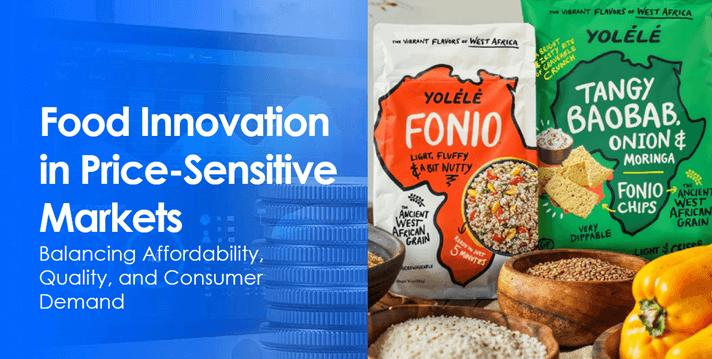Why Functional Foods Could Be the Future

In the face of rising food prices and a growing awareness of the crucial link between diet and health, functional foods are emerging as a powerful and promising solution for delivering affordable nutrition across Africa. These are not simply foods that provide calories; they go a step further, offering targeted health benefits that can address prevalent nutritional deficiencies and contribute to overall well-being. By strategically incorporating functional ingredients into everyday staples and leveraging locally available resources, the continent can chart a course towards a healthier and more resilient food future.
Defining Functional Foods: Nutrition Beyond Basic Calories
Functional foods represent a paradigm shift in how we think about the role of food in our diets. They transcend the basic function of providing energy and essential nutrients by delivering specific health benefits that can positively impact bodily functions and potentially reduce the risk of disease. This category encompasses a wide range of products, but two core types are particularly relevant to the African context: fortified staples and plant-based proteins.
Fortified staples involve enhancing commonly consumed foods with essential micronutrients that are often lacking in local diets. A compelling example is the fortification of bouillon cubes with vitamins and minerals. Research conducted by UC Davis has demonstrated the significant impact of such interventions in West Africa, showing a notable reduction in the rates of vitamin A and iron deficiencies – two widespread health concerns with serious consequences, particularly for children and women of reproductive age. By integrating these vital nutrients into a widely used food item, fortification offers a cost-effective and scalable way to improve public health outcomes.
Plant-based proteins, derived from locally sourced legumes such as cowpea and bambara nut, as well as novel pulses like mung bean, are gaining significant traction as alternatives to often expensive imported soy. These indigenous crops are not only more affordable and environmentally sustainable but also offer a rich source of protein, fibre, and other essential nutrients. The African plant-based protein market is projected to experience substantial growth, from USD 1.4 billion in 2024 to USD 2.4 billion by 2031, with an impressive compound annual growth rate (CAGR) of 6.9%. This growth reflects both increasing consumer demand for healthier and more affordable protein sources and the innovative efforts of local food processors to harness the nutritional power of indigenous crops.
Market Momentum: A Continent Embracing Health-Conscious Choices
The momentum behind functional foods in Africa is undeniable. New product launches featuring prominent health-claim labels witnessed a remarkable 45% surge in Nigeria and Kenya between 2022 and 2024. This surge is a testament to both the increasing innovation of food manufacturers who are recognising the market opportunity and the strategic shifts in retailer shelf space to accommodate these health-focused offerings. Supermarkets and even smaller informal retailers are increasingly stocking functional food options, indicating a growing consumer demand.
Crucially, consumer awareness campaigns spearheaded by non-governmental organisations (NGOs) and government programs are playing a vital role in accelerating the acceptance of functional foods. These initiatives are educating the public about the benefits of specific nutrients and the role functional foods can play in addressing nutritional deficiencies. As a result of these efforts, over 60% of medium-income households across the continent now recognise “functional food” as a distinct and desirable purchasing category. This growing awareness and understanding are critical drivers of market growth and long-term sustainability for the functional foods sector.
Consumer Willingness to Pay: Investing in Well-being
Empirical studies are providing valuable insights into consumer behaviour regarding functional foods. Research indicates that educated consumers – those who have been exposed to clear and simple nutritional messaging – are increasingly willing to pay a premium for products that offer demonstrable health benefits. Studies have shown that this premium can be as high as 20% for products clearly labelled as “high in protein” or “vitamin-enriched.” This willingness to invest more reflects a growing understanding of the long-term benefits of good nutrition and a recognition that food can be a powerful tool for preventative healthcare.
A compelling example of this trend is observed in a survey conducted across five West African cities, where 55% of respondents actively chose moringa-fortified bread despite it being priced 30% higher than conventional bread. Their primary motivation for this choice was the clear communication of the health benefits associated with moringa, a locally sourced ingredient known for its rich nutritional profile. This demonstrates that when the health advantages are effectively communicated and understood, consumers are willing to adjust their spending habits and prioritise functional foods, even in price-sensitive markets.
How to Win in Functional Foods: Strategies for Success
To capitalise on the burgeoning opportunities in the African functional foods market, businesses need to adopt strategic and consumer-centric approaches:
- Invest in R&D and Pilot Runs: Innovation is key. Companies should prioritise research and development to identify and incorporate locally available, nutrient-rich ingredients into their product lines. Conducting small-batch pilot trials (for example, producing 1,000 units of a new nutrient blend) allows for iterative refinement based on valuable feedback regarding taste, texture, and cost-effectiveness from target consumers. This agile approach minimises risk and ensures that new functional food products are well-received by the market.
- Certify & Communicate: Building trust is paramount. Obtaining third-party endorsements from reputable organisations such as UNICEF or local nutrition boards can significantly enhance consumer confidence and justify any price premiums associated with functional foods. Communicating these certifications on product packaging and in marketing materials reinforces the credibility of the health claims and helps consumers make informed purchasing decisions.
- Sampling & Sachet Sizes: Overcoming initial purchase hesitation, particularly among low-income consumers, is crucial. Offering low-stakes trial formats, such as small and affordable sachet sizes (for example, a “10g immunity booster pack”), allows consumers to experience the product and its benefits without a significant financial commitment. This strategy can drive initial trial and encourage repeat purchases if the product meets expectations.
- Cross-Sector Partnerships: Collaboration can amplify impact. Partnering with health-focused NGOs to bundle product samples with community health outreach programs can be a highly effective way to reach target populations and educate them about the benefits of functional foods. These partnerships leverage the trust and reach of health organisations to promote both product adoption and improved nutritional outcomes within communities.
Key Takeaways: A Healthier Future Through Functional Foods
The rise of functional foods in Africa signifies more than just a fleeting dietary fad; it embodies a profound evolution towards a food system that prioritises health and resilience. These nutrient-enhanced options are carving out new, valuable market segments, even within price-conscious environments. By offering demonstrable health advantages, functional foods can justify a higher perceived value, opening up exciting opportunities for food businesses to innovate and cater to the growing demand for healthier choices while simultaneously addressing critical nutritional deficiencies across the continent.
Our latest report, “Food Innovation in Price-Sensitive Markets,” dedicates significant analysis to this critical consumer behaviour shift across key African markets. Within its pages, you’ll find a deep dive into the data illustrating the increasing appetite for smaller stock-keeping units across a diverse range of both staple and processed food categories. The report goes beyond simply identifying this shift, providing you with actionable insights on how your brand can strategically innovate with product sizes. We explore effective methodologies for developing pricing architectures that resonate with these budget-conscious consumers, ensuring that affordability doesn’t come at the expense of perceived value.
Download the report via the link.
For brands looking to capitalise on this transformative trend, two key pillars emerge: building trust through credible certifications and ensuring clear, impactful communication of the specific health benefits offered. These elements are crucial in driving initial consumer trial and fostering long-term brand loyalty. Furthermore, the strategic development and promotion of both plant-based proteins, often derived from readily available local crops, and fortified staple foods represent a powerful dual engine for market growth. This approach leverages the affordability and sustainability of local resources to deliver enhanced nutrition to a wider population, paving a more accessible and healthier dietary pathway for the future of Africa.
Ready to invent the future?
Our teams possess extensive in-market experience that drives measurable growth for brands. Please reach out to us to learn more.

